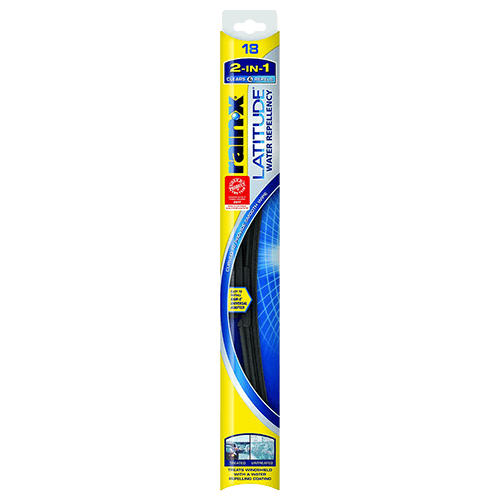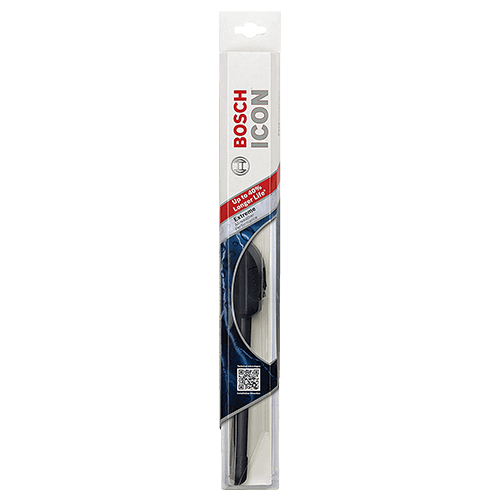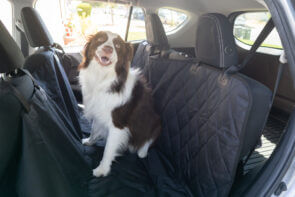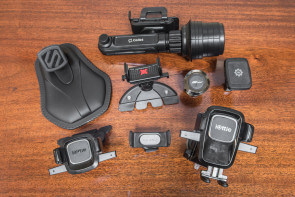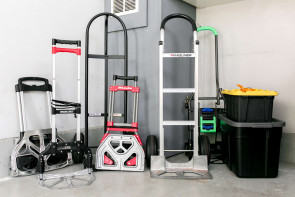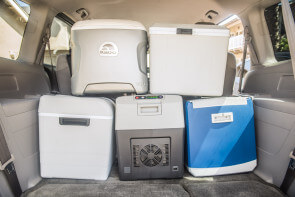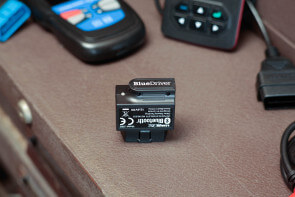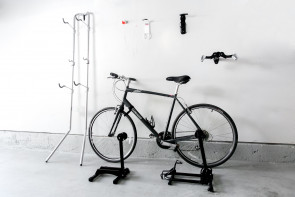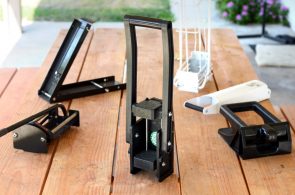
The 8 Best Windshield Wipers
After a full year of testing eight top-rated windshield wipers in the rain and sun on a Toyota Corolla, we concluded that most wiper brands give you basically the same performance. The Rain-X – Latitude wins our pick for best windshield wiper. The Rain-X install bracket provides near-universal compatibility, which makes buying the right blades much easier. If you have a windshield that common wipers won’t fit well, the Bosch – Icon line features different wiper curvatures that should help prevent fit-related problems.
After a full year of testing eight top-rated windshield wipers in the rain and sun on a Toyota Corolla, we concluded that most wiper brands give you basically the same performance. The Rain-X – Latitude wins our pick for best windshield wiper. The Rain-X install bracket provides near-universal compatibility, which makes buying the right blades much easier. If you have a windshield that common wipers won’t fit well, the Bosch – Icon line features different wiper curvatures that should help prevent fit-related problems.
Table of contents
- The eight windshield wipers we tested
- How we selected products to test
- How we tested
- Top pick: Rain-X – Latitude
- For a specialized fit: Bosch – Icon
- The other finalists we tested
- Types of windshield wipers
- The bottom line
The eight windshield wipers we tested
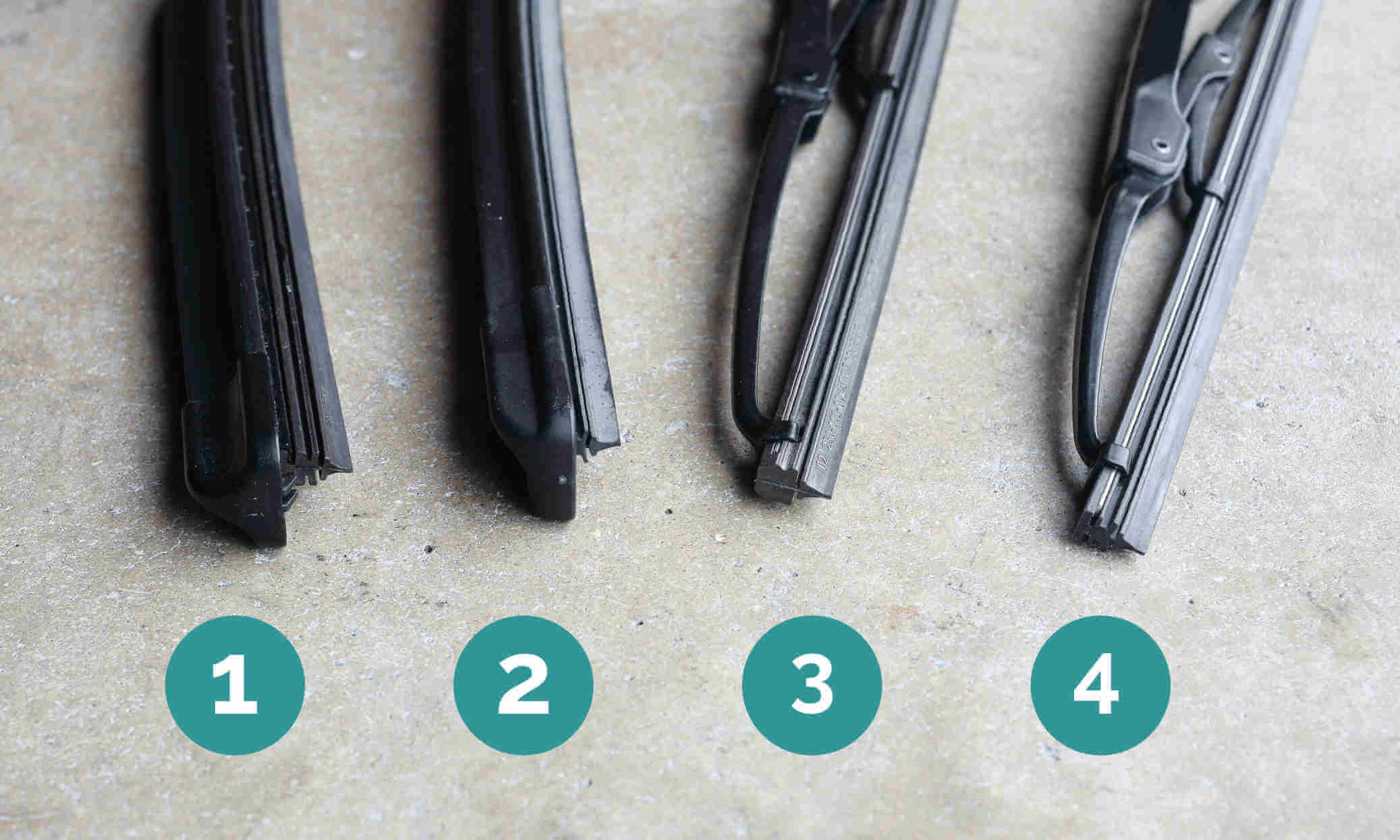
| Wiper | List Price | Frame Shape | Compatibility (1–3) | Quality (1–3) | Installation (1–3) |
|---|---|---|---|---|---|
| 1. Rain-X - Latitude | $17.99 | Beam | ☆☆☆ | ☆☆ | ☆☆ |
| 2. Bosch - Icon | $27.99 | Beam | ☆☆ | ☆☆☆ | ☆ |
| 3. Bosch - Excel+ | $17.99 | Traditional | ☆☆ | ☆☆☆ | ☆☆☆ |
| 4. PIAA - Super Silicone | $23.99 | Traditional | ☆☆ | ☆☆☆ | ☆☆☆ |
| 5. Valeo - Ultimate | $24.82 | Beam | ☆☆ | ☆☆ | ☆☆☆ |
| 6. Denso - First Time Fit | $19.97 | Traditional | ☆☆ | ☆☆☆ | ☆☆☆ |
| 7. Anco - AeroVantage | $19.04 | Traditional | ☆ | ☆ | ☆☆☆ |
| 8. AERO | $17.99 | Beam | ☆ | ☆☆ | ☆☆☆ |
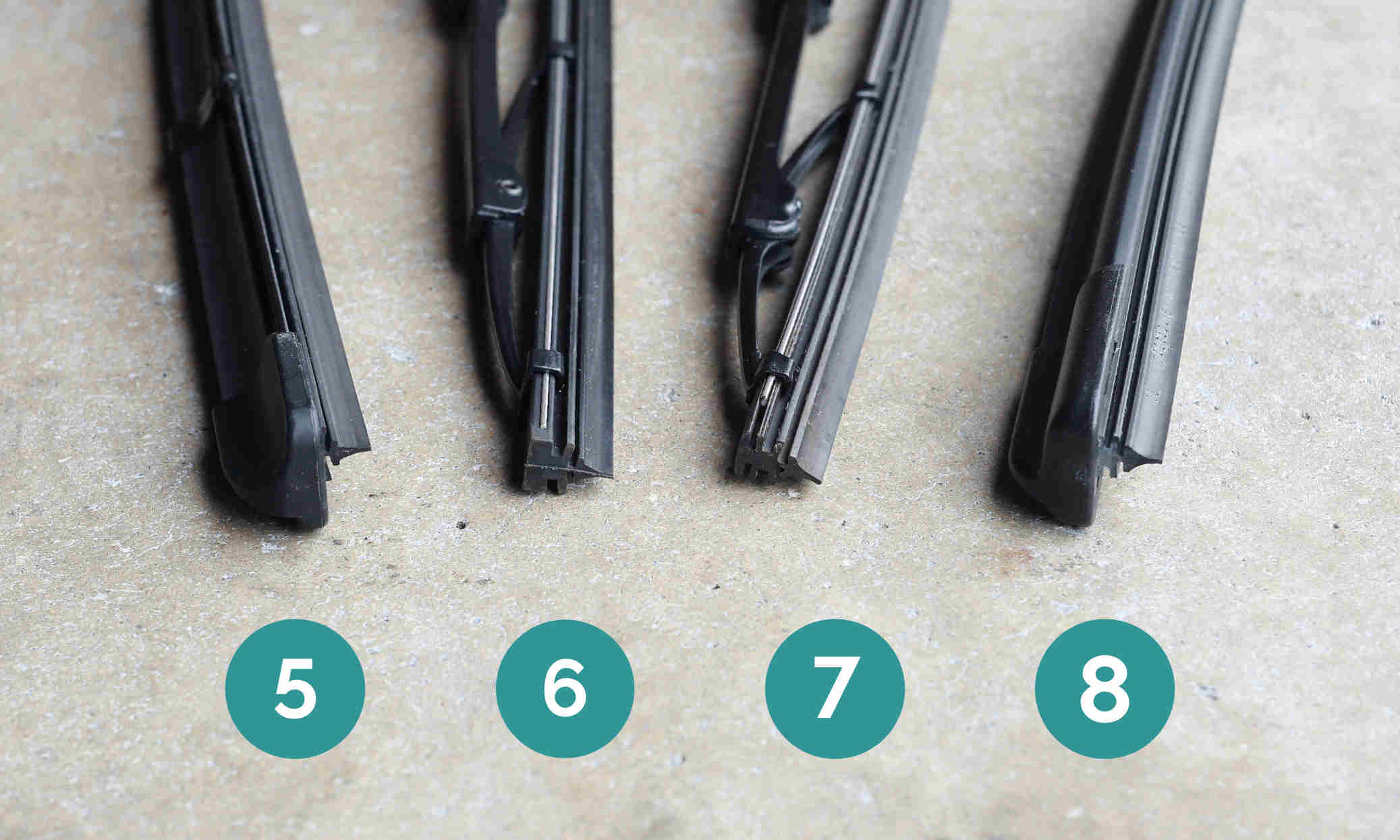
How we selected products to test
We spent days combing the web for clear indications of what makes a superior wiper. The few reviews we found presented mostly anecdotal evidence: basically, people put new wiper blades on their cars, and they’re happy, unless the blades don’t fit.
Bad fit can lead to streaks or even gaps in wiper coverage, so finding wipers that could match the fit of factory-original wipers was at the top of our checklist.
Many enthusiasts comment that their vehicles don’t work well with universal-fit wipers bought from the auto-parts store or gas station. The more prestigious your car, the more likely enthusiasts are to recommend buying replacements from the dealership.
Consumer Reports used to run tests of different wipers across their extensive fleet of test vehicles, but they gave up trying to find “better” wipers and now simply recommend frequent replacement.
Wirecutter has picked up where Consumer Reports left off; their comparison review is the only one we found that actually attempts to rank wipers against each other. We checked out all the top picks from the Wirecutter review, as well as some alternates they mentioned but didn’t test.
Finally, we went to Amazon and other retailers to find the top-rated and most-purchased wiper blades. We specifically looked for high overall scores to test the best blades against each other.
The negative scores on popular wipers (there are always negative reviews) pointed to some consistent problems that cause frustration. Streaks and noise are the most common complaints, which could result from dirt, but they’re also signs that wipers don’t fit a windshield well.
We selected a price range from $6 to $25 in order to compare premium and budget picks across a variety of popular types.
How we tested
We used each of the eight wipers on a Toyota Corolla for approximately four weeks of testing in real-world conditions in southern California. After that break-in period, we tested each wiper to see if it still held up well and wiped away water cleanly.
Wear and tear on a wiper’s thin rubber blade is caused by several factors; baking in the sun’s ultraviolet-spectrum rays is the most damaging, followed by oxidation from the air. We left all eight sets of wipers out in the sun for an additional 20 weeks to see what would happen to the rubber.
Fit and compatibility
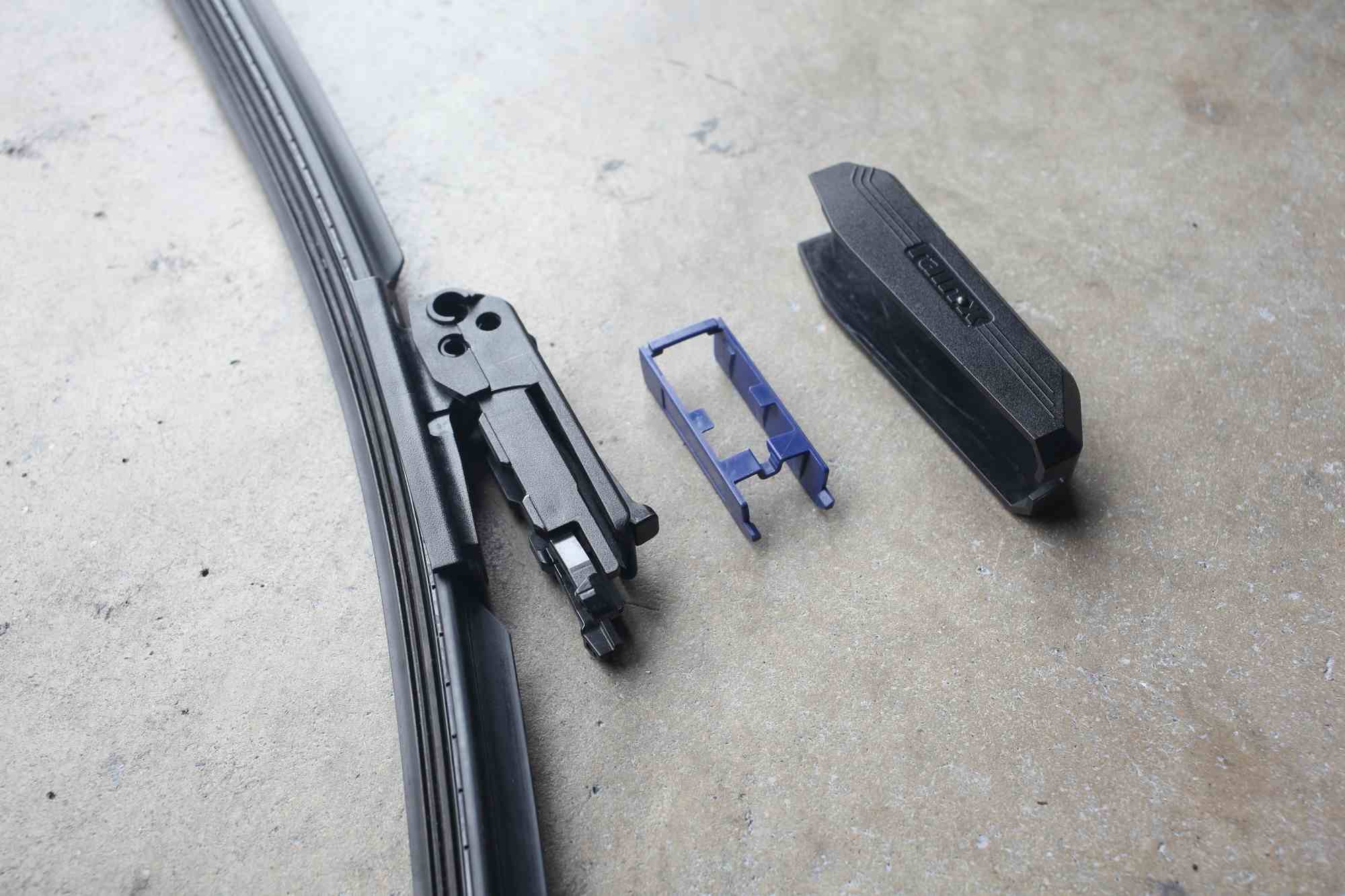
| Brand | Compatibility | Fit guide URL |
|---|---|---|
| Rain-X - Latitude | Universal-fit | Rain-X Length Finder |
| Bosch - Icon | Three models for eight types | Bosch Part Finder |
| Bosch - Excel+ | Fits three types | Bosch Part Finder |
| PIAA - Super Silicone | J-hook only, universal also available | PIAA Wiper List |
| Valeo - Ultimate | Eight models | Valeo Wiper List |
| Denso - First Time Fit | J-hook only, other types available | Denso Wiper List |
| Anco - AeroVantage | Fits two types, other models available | Anco Wiper List |
| AERO | J-hook only, universal available | AERO part finder broken (see below) |
We tested on a car with a J-hook connector, which is fairly common, but even if you have a wiper arm that everyone makes adapters for it’s best to check with a parts catalog for the correct length before you buy your wipers. We also checked each brand specifically for wipers compatible with the VW Beetle, Land Rover, and Honda Civic.
Rain-X won points here for selling a wiper with a near-universal adapter. For most cars on the road, you’ll only have to look up the lengths you need when buying.
Most parts catalogs are fairly easy to use, but bigger manufacturers like Bosch have four or five different styles of wipers that will fit your car. They don’t tell straight up “this is for cheapskates” or “these should be as good as you can get,” you’re mostly left to infer that after looking at prices on a retailer listing.
Of note is the Aero website: Aero has a vehicle-compatibility widget, but it has been broken every time we checked. The AERO wipers for J-hook cars are easy to find, but if you have some other type of attachment system you’re in for some detective work if you want to buy these wipers. They have installation instructions for a “Multifunction” wiper, but if you want to buy it you’ll have to search for your car model on Amazon, or figure out a comparable model AERO has an Amazon listing for.
Wiper life and durability
In theory, better rubber means better wiper life. But after testing eight different models side-by-side, it seems clear that the premium-replacement market is using basically the same rubber on most models.
Sunlight and oxygen are the big aging factors, but another source of damage is ice, especially if you’re living in an area where scraping windshields is a daily chore before driving. Sand, road salt and gravel can also damage rubber wiper blades.
PIAA’s Super Silicone wiper has the only significantly different compound we tested, and buyer reports insist their lifespan is much longer. However, we saw no difference in our one year test.
Streaks
After the break-in period, we looked for evidence of better or worse performance when it came to actually clearing away water. To keep your windshield streak free, you need even wiper contact.
We didn’t see any streaks when we tested with these blades. That’s not to say they’re all perfect, though: The ability of a wiper to maintain contact is partly determined by a good match between the shape of the windshield and the design of the support. Even though we didn’t get streaks or skips with a particular wiper on a particular windshield, it doesn’t mean everyone will have the same luck.
With beam-type supports, the curvature of the springy backing and the flexibility of the wiper edge have to be just right to get even pressure across the entire wiper blade. If you like beam blades, Bosch bends them in three different curve profiles to help get a better fit. You can check which blade is recommended for your vehicle on Bosch’s website.
Chatter resistance
When your wiper sticks to the windshield rather than gliding smoothly, it can start to make an unpleasant rubbing sound that’s usually called “chatter” in reviews.
Chatter is caused by blades sticking, but the underlying cause is usually uneven pressure. In our tests, beam-type wipers were all prone to some chatter when new or after we cleaned the windshield.
After the break-in period, the problem improved, and none of the wipers were loud enough to be annoying. In our tests, the minor chatter we saw did not leave streaks or gaps in wiping.
Ice and snow performance
We didn’t run tests with this group in ice and snow, but the major factor for winter driving is having wiper blades freeze from collected snow and ice. Beam-type blade supports don’t have as much structure to catch snow, so they’re always less prone to problems.
Top pick: Rain-X Latitude
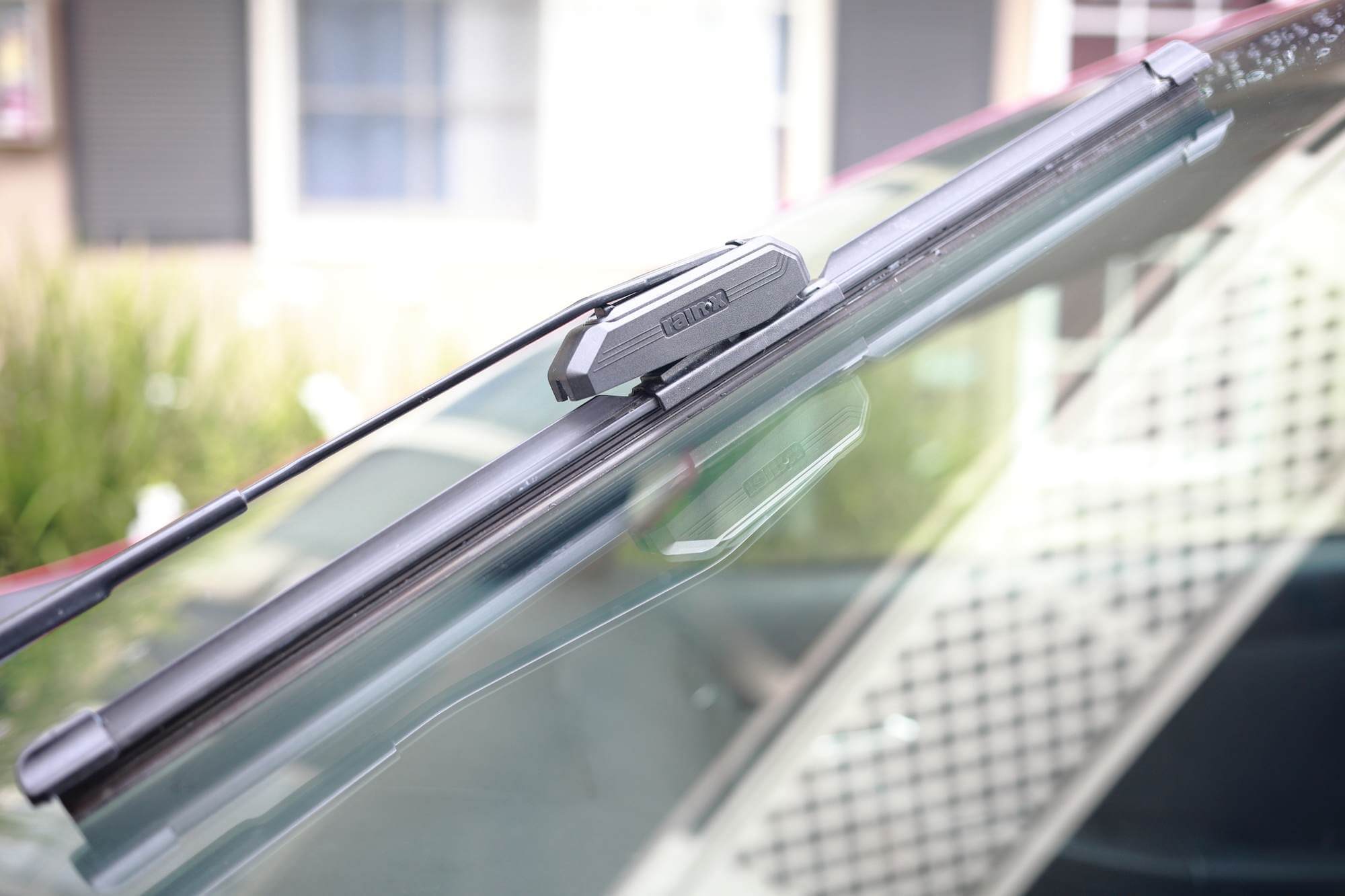
Of all the wipers we tested, the premium-brand Rain-X – Latitude wipers seemed the most questionable value in the beginning. But after we checked the Rain-X compatibility and saw how many different vehicles they support with this wiper, we started to warm up to the brand. An easy installation secured Rain-X’s position.
Rain-X is one of the few brands that sells a beam-support wiper with an included bracket for a full range of wiper-arm types. Basic instructions are included on an insert in the box, but the video installation guides on the Rain-X website are even more thorough in covering the different install procedures for each type of wiper arm.
This wide compatibility means that if you’re buying new blades, the only question you really need to answer when locating the right Rain-X wiper is length. In comparison, other brands present you with entirely different wiper types for various attachment systems. We love that we can recommend the Rain-X wiper blade and know people will be able to install it easily.
If you’re a big enough car nerd to remember which attachment system your cars and trucks use, there are other windshield wipers that would be a better value.
Best Overall: Rain-X - Latitude
Rain-X makes good wipers and makes them fit nearly every type of attachment system. Instructions are easy to follow, and the cost is fairly low. The water-repellent treatment doesn't last long, but it's a perk. The only downside is if your windshield has curves that are tricky to fit.
Rain-X is best known for their liquid windshield conditioner. Applying silicone oil (dimethylpolysiloxane) as a water repellent makes a lot of sense, and many good windshield washer fluid formulas include it.
Putting that treatment on a wiper blade as a hard coating, though, is a less obvious method of application. These wipers do leave some silicone behind for a few weeks, but after that they’re pretty normal beam-style wipers. If cost were the biggest difference, we’d say spend the money on a bottle of Rain-X instead of upgraded wipers.
Possible fit issues
Some user reviews report streaking problems with the Rain-X wiper blades. In our four weeks of testing and a follow-up test after a year in the sun, we didn’t see any streaks.
It seems likely that the streaks reported by these users were caused by uneven contact between the wiper edge and the windshield.

Beam-support wipers can’t respond as well to curvature in the middle of the wiper path, but we’ve also seen reports of a bad fit with traditional support brackets. If you’re having difficulty with streaks, the Bosch – Icon wipers have a better reputation for perfect fit.
Key takeaways:
- Rain-X – Latitude wipers performed well in all of our tests.
- These are beam-support wipers, so they look good and won’t accumulate as much snow as traditional wipers.
- This is one of the few beam-type brands that gives you a complete set of adapters built in to the wiper, so you won’t have to hunt for the right model to fit your car.
- Make sure you’re picking the correct wiper lengths for your vehicle.
For a specialized fit: Bosch – Icon
![]()
If you find that other beam-type wiper blades don’t clean all of your windscreen effectively, we suggest trying the Bosch – Icon beam-type blades.
Bosch is one of the few manufacturers to make their beam-type wipers with a different bend radius for different cars. The driver’s side almost always gets an “A” curvature, since it’s a wide wiper working on the flattest part of the windshield.
For the passenger side, Bosch designates a B or sometimes an original equipment (OE) specific curve to match shorter wiper blades to a tighter curve.
Even pressure across the edge of the wiper is essential to good performance, but Bosch also sells their wipers with specific brackets to fit different wiper arms. If you’ve got a German or British automobile, there’s a good chance you’ll need the OE variant.
In a few cases, even the adapters included in the Icon package won’t fit your car. So it’s important to always check for compatibility on the wiper manufacturer’s website before you buy.
While Bosch does have a complete database of automobiles with links to each wiper that will fit your vehicle, the company doesn’t fully explain the differences between their products. The Icon line is popular and easy to find at parts stores or online; but if you have a car that Bosch doesn’t make an Icon wiper for, it’s hard to say what your next-best fit will be.
For Fancy Windshields: Bosch - Icon
Bosch makes original equipment for many European manufacturers, and they take pride in a perfect fit. If you see streaks with other brands, Bosch is worth a try. There are three different models (A, B and OE) for each length, check the Bosch website to see which is right for your vehicle.
When buying auto parts online, remember that Amazon’s compatibility database is often inaccurate. Always check the manufacturer’s compatibility list if you’re doubtful about what length or attachment system you have.
We should note that the installation for the Bosch adapters wasn’t as intuitive as expected. If you throw away the cardboard on the back of the box, you might have difficulty finding Bosch’s installation instructions elsewhere since they have so many wiper types.
Bosch’s wiper is definitely the sleekest of all the beam-type blades we tested. If you want blades that look great, this is probably your best bet.
![]()
In use, these Bosch wipers work very well. We didn’t have any concerns with squeaking, streaking or wear. That said, these are premium wipers that cost nearly four times more than other brands.
If you don’t need the specialized fit of Bosch wipers, their cost is hard to justify. Had it been easier to find the right blade for particular vehicles, Bosch would probably have taken first place in our round-up. As it is, we hope we won’t have to use the clunky vehicle selection system on Bosch’s website again.
Key takeaways:
- Bosch – Icon wipers are the best-looking blades we found.
- If you’ve got a windshield with curves that other wipers can’t follow, Bosch probably fits better.
- This is a premium wiper, but it’s not the most expensive we tested.
- Performance from the Icon is very good, and this is the most-recommended brand we found.
The other finalists we tested
Bosch – Excel+
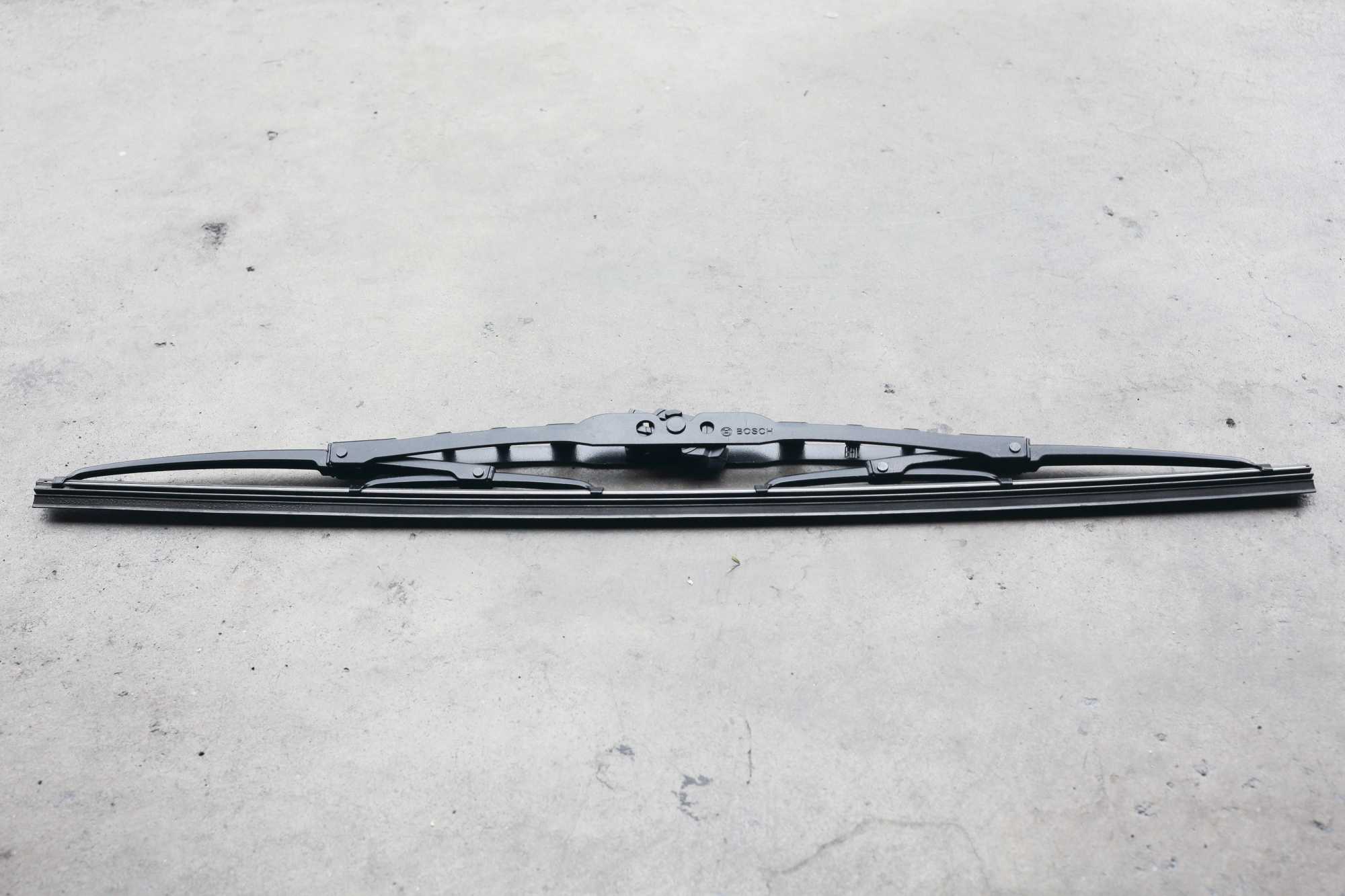
The Bosch – Excel+ is the premium version of Bosch’s traditional wiper design. At about double the price of economy designs like Anco, these wipers aren’t cheap.
Excel+ wipers are better built than budget wipers, though, and since they’re fairly easy to find, they’ll almost always be less expensive than a brand-specific original part.
If you’re lucky, these are even nicer than the wipers that came with your car for far less money than you’d pay at the dealer’s parts counter.
With a traditional support bracket compared to the beam supports on our top picks, the Excel+ won’t be quite as good in the snow. Plenty of drivers get by with wipers like the Excel+ in snowy places, but beam designs are a nice upgrade.
PIAA – Super Silicone
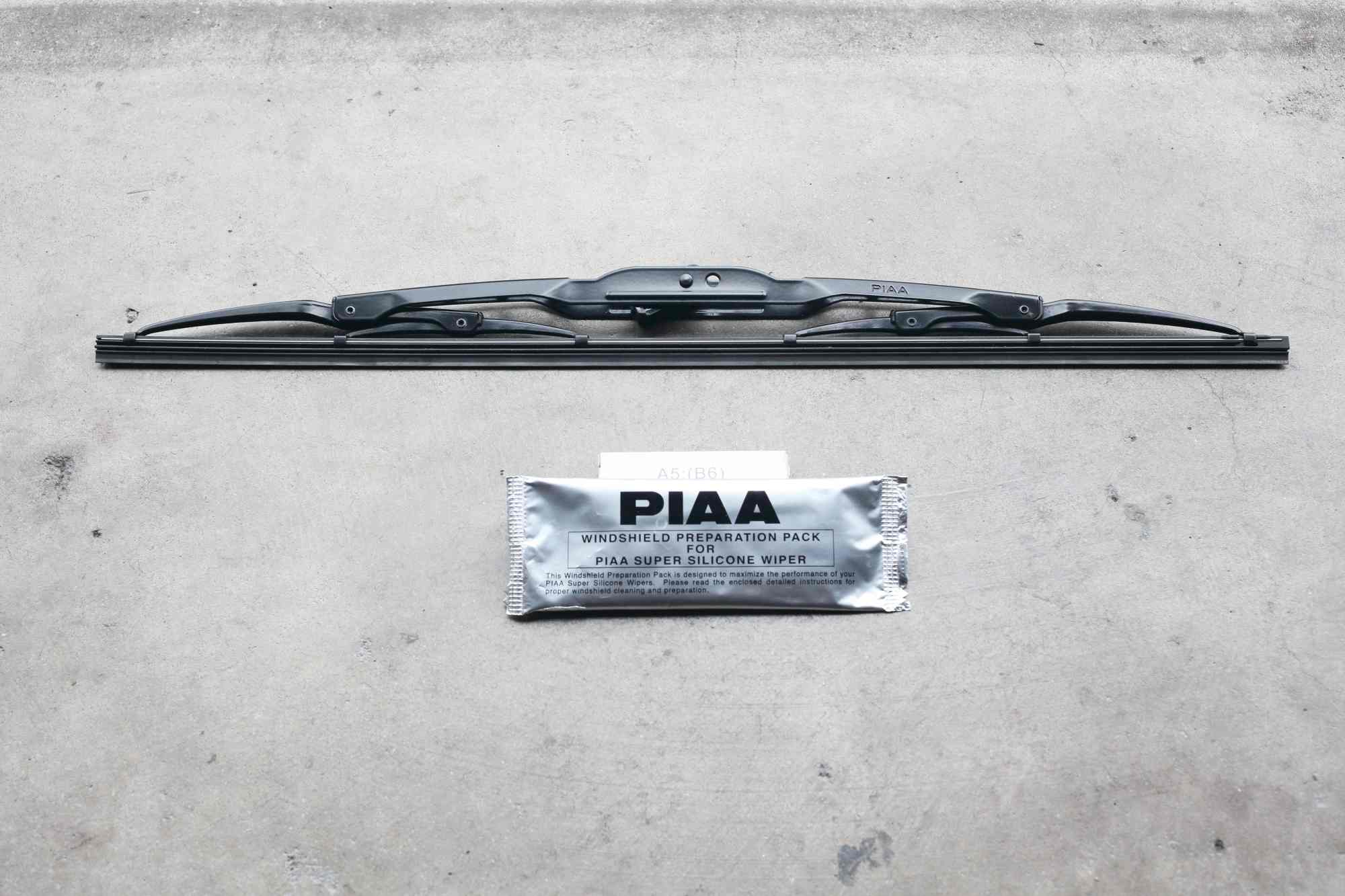
PIAA’s Super Silicone blades have an amazing reputation among car enthusiasts as long-lasting wiper blades. Some claim that they last decades longer than rubber wipers. Those reports are difficult to verify, because it’s very rare that any two cars (even if owned by the same person) would get exactly the same exposure to the sun.
PIAA also claims that the silicone from their wipers will leave a water-repellent coating on your windshield. In theory, this is similar to the coated Rain-X blades; the effect, however, should be longer-lasting, since the silicone oils come from the blade itself and are not just a coating.
We like the PIAA blades, and it’s clear that they care about making them well. PIAA also includes a cleaning and silicone treatment wipe with the wiper that will help boost the water-repellent effect while you’re breaking in the blades.
In a side-by-side test, a PIAA blade running on the PIAA treatment and the Rain-X blade running on Rain-X performed the same. Both wiped well, and the water was obviously beading up and rolling off more easily than on an untreated area.
If we take for granted that the silicone blades will survive two years instead of one year, they’re a better value than Rain-X or Bosch. Lifespan is only a part of what’s important, though: you still need to make sure they fit well.
The Super Silicone wipers were a good fit on our car, but note that the Super Silicone model only works with a J-hook attachment. PIAA includes four different sizes so you can get an exact fit; but if you want silicone blades with a vehicle that uses other attachment systems, your best bet is the more expensive PIAA – Si-Tech blade.
Valeo – Ultimate
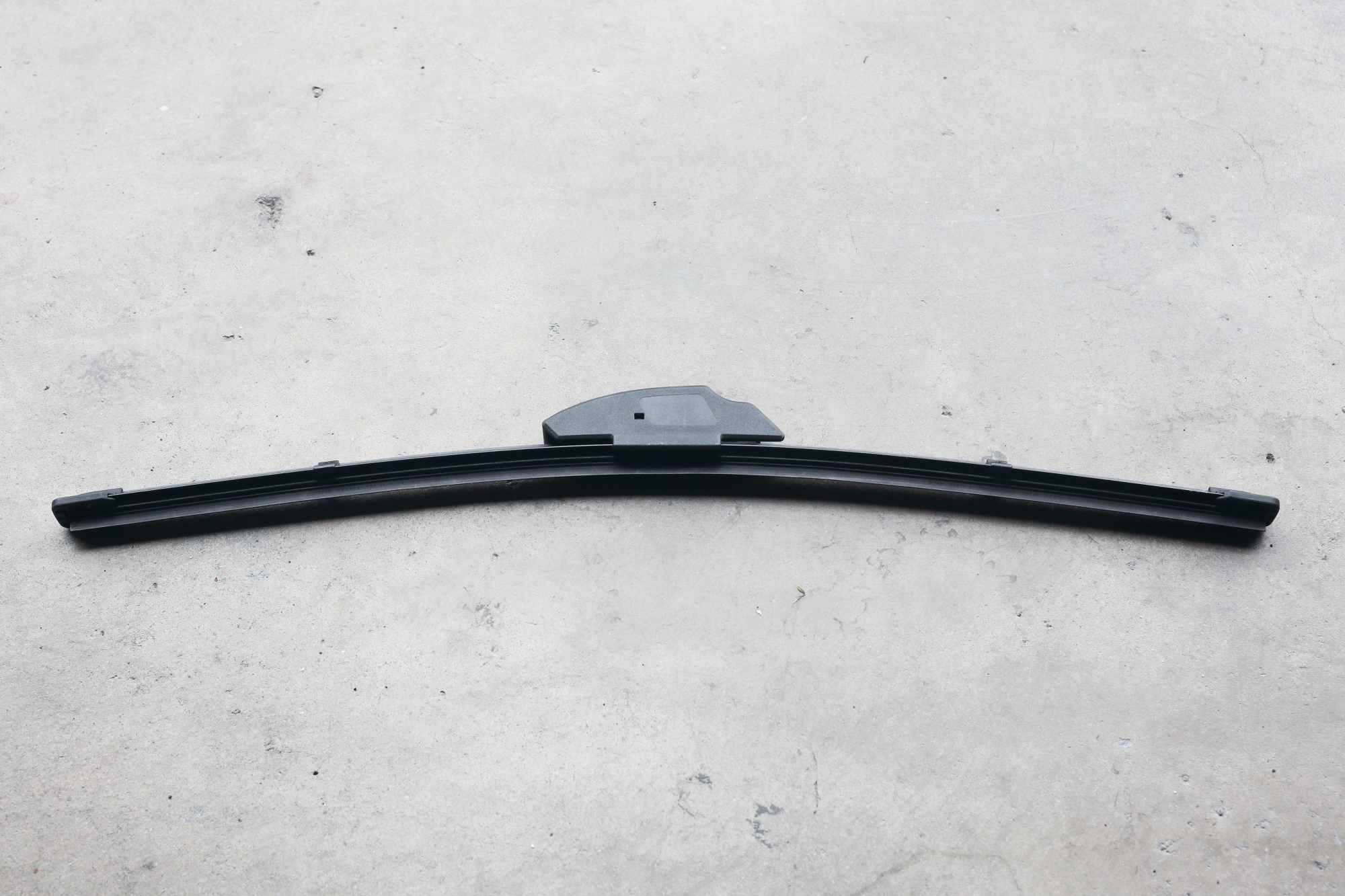
For a reasonable price, Valeo – Ultimate wipers should work just as the premium brands for most people. Valeo isn’t a name you’re likely to recognize, but like Bosch, this French company is making original parts for cars worldwide.
We like these beam-type wipers very much, and they performed well. The look of these “ultimate” wipers is really the only place we had issues: Valeo uses a thinner rubber spoiler fin on the top side of the wiper, so you can see the painted steel (and even what looks like a batch number) underneath.
As an original equipment manufacturer, Valeo makes wipers to fit a wide range of cars, so check their fit guide if you have something different than the typical J-hook attachment system.
Denso – First Time Fit
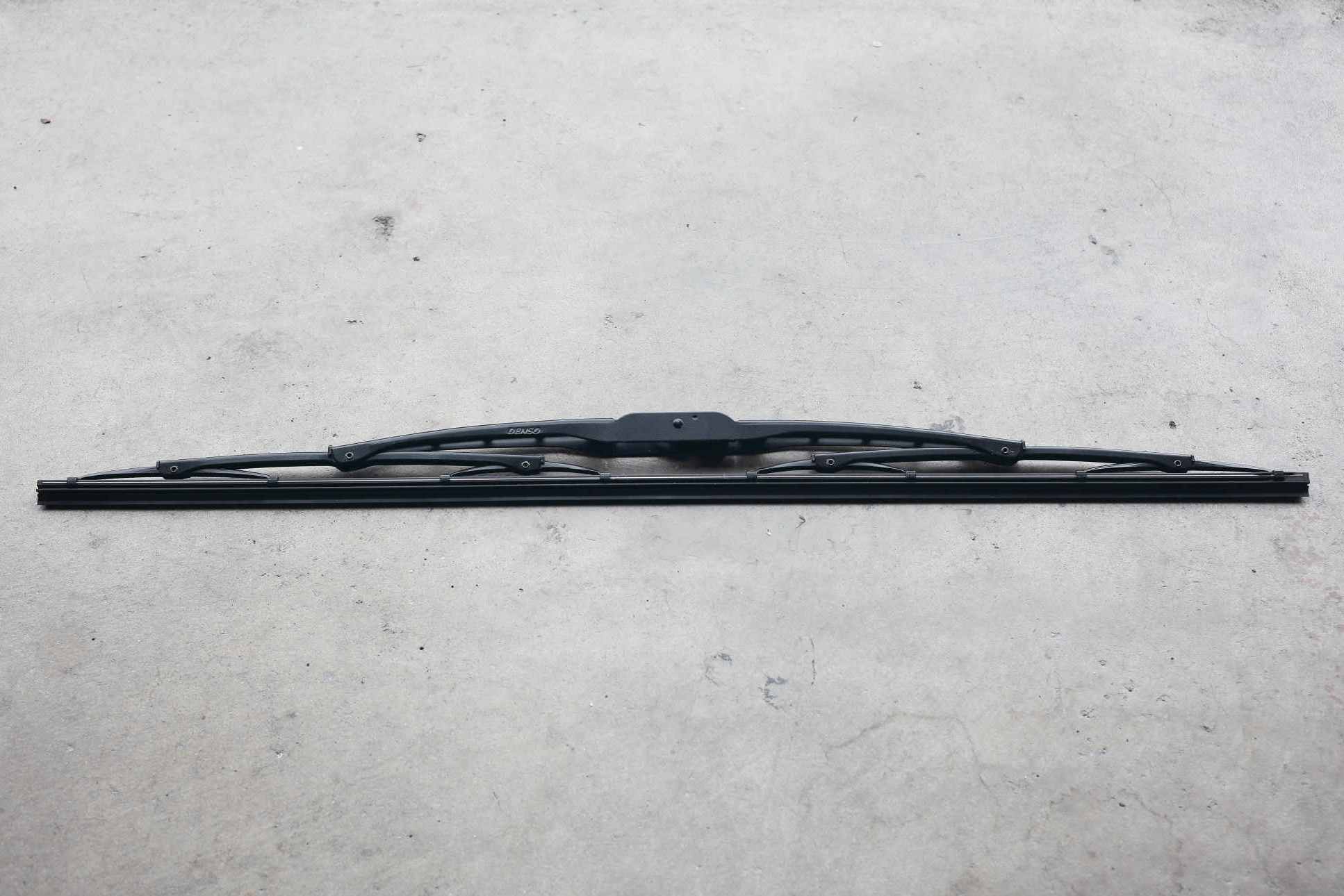
The Denso – First Time Fit wipers are pretty ordinary, and Denso probably made the factory-original wipers on our test car, a Toyota Corolla.
If you want a real factory-original equivalent part, Denso is the second-largest original equipment parts manufacturer in the world. The First Time Fit line is designed explicitly to give you the right parts without bulky adapters.
These wipers are well-made, and Denso has parts to fit a wide range of vehicles. For the amount we paid, though, the benefits of beam-type wipers in the snow (and in terms of looks) make those models an obvious upgrade.
Anco – AeroVantage

When we looked closely at all of the wipers we tested, the Anco – AeroVantage was the only design that showed obvious cost-cutting. Where other brands use through-hole rivets to support the back-and-forth pivot of the support arms, Anco uses bent-over tabs.
Anco’s rubber blade also seems like it might be cut from a longer extruded piece and clamped in place with the steel supports and backing, compared to the more secure molded rubber on other wipers. This design allows the blade to slide back and forth as much as an inch along its track.
These blades wiped well in our test, and that makes their incredibly low price enticing: They go for about half the price of most wipers and a quarter of the cost of the PIAA blades. The security of the other wipers definitely feels worth the extra money, though, and should mean more even pressure on trickier windshields than ours.
AERO

If you like the low-profile beam shape but you’re not especially picky about special coatings, the AERO – Premium All-Season windshield wiper blades are a great buy. At less than $20 a pair, you get a great high-end look and the same good wiping performance as most of the other blades we tested.
We passed on making AERO a runner-up for a few reasons. The J-hook attachment style is popular and works on our test vehicle, but AERO doesn’t make it easy to buy their Multifunction Wiper model with a universal adapter. There are listings on Amazon (the main retailer for AERO) for some vehicle-specific models, but they all use the same images as the J-hook version, so it’s hard to tell what clips they include.
AERO has a 10 percent rate of one-star reviews on this item, which is not far outside the norm. The majority of purchasers seemed to have the same great experience we did, but some reviewers found that these wipers skip entire sections of their windshields.
Types of windshield wipers
There are only a few categories of windshield wipers, based on the shape of the support bracket that presses the wiper blade evenly against the windshield.
Traditional support: This wiper design is still very common and pretty much the same as it’s been for decades. The support bracket is actually a “tree,” with one large support holding two smaller supports that each press on four smaller brackets.
All of these pieces can swivel toward or away from the windshield to adjust to its contours, so the pressure of the wiper arm is evenly distributed around curves. The pressure points themselves do tend to wear faster than the rest of the blade, though.
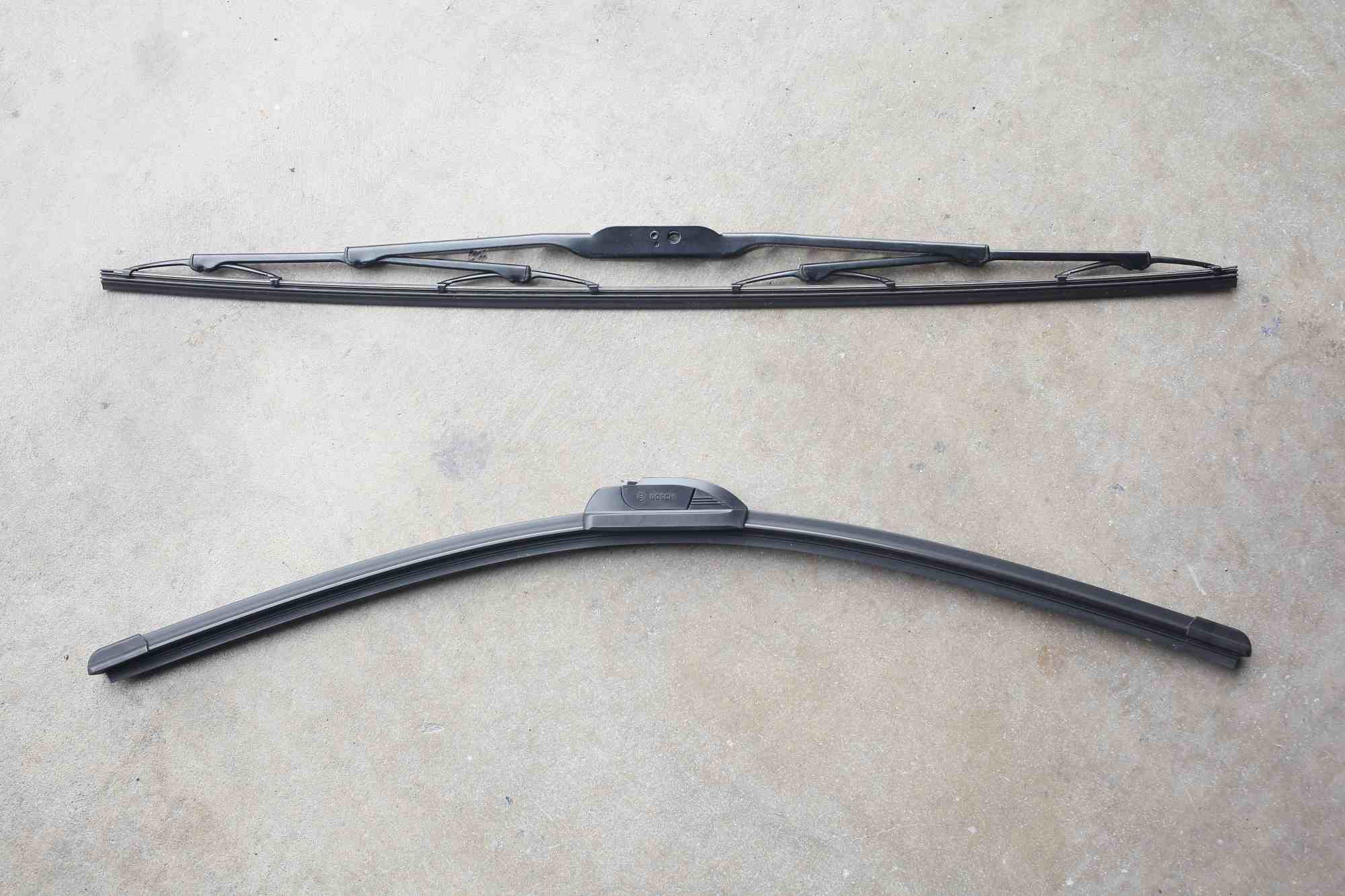
Beam support: This new support design is becoming standard for luxury-class vehicles and upgrade trim packages., This bracket uses one long band of curved spring steel, rather than a set of swiveling arms, to maintain even pressure.
The beam design looks nice, and its low profile helps prevent snow and ice from building up and freezing your wiper. This type of wiper also minimizes aerodynamic drag at speed.
There’s almost always a rubber “spoiler” fin on the back of beam wipers to keep all that airflow from causing the blades to lift off when you put your foot down.
If your windshield has a tighter or flatter curve than the beam-support bracket is made for, the pressure won’t be as evenly applied across the wiper edge. Generally, though, wiper blades are flexible enough so this only happens in extreme cases.
Companies like Bosch claim that beam wipers made as original equipment for specific cars fit the contours of a windshield better. If that’s true, then any replacement blades you buy would have to be comparable.
Hybrid support: Most manufacturers also sell wipers that are closer to the look of a beam-type support but keep the traditional equal-pressure arms under a sleek cover. We didn’t test this type of wiper since it’s basically just a more attractive version of a traditional bracket.
Other designs for snow and ice: Beam-type wiper blades are about as good as it gets for preventing snow and ice problems. If the wiper uses a traditional support system, the manufacturer can cover up the holes and gaps in the frame so that snow and ice can’t freeze the moving pieces together.
The bottom line
Good windshield wipers can make the difference between seeing well in bad weather and not seeing at all. Windshield wipers can last for a very long time, but if you notice any reduced visibility, and washing the blades doesn’t help, it’s time to buy new blades.
If you’re buying a windshield wiper because your old blades are falling off, Rain-X – Latitude blades are a nice upgrade from most original equipment and should fit nearly any car. Make sure to check or look up the length of your current wipers so you know which blades to get.
If you’ve been unhappy about streaks and noises from other wiper blades, it’s worth checking out the Bosch – Icon blades. They’re designed in three different curvatures to fit different window shapes, and they’re a little bit sleeker than the Rain-X blades.
Top Pick: Rain-X - Latitude
These wipers are top of our list because it's easy to find blades that fit. You just have to figure out the length you need; the built-in attachment bracket works for nearly every type of wiper arm. The beam-type support makes these blades slim, which helps them perform better in snow.
More Reviews
The 9 Best Back Seat Covers For Dogs
Plush Paws Products
iOttie - HLCRIO125
Mountain House - Just in Case
Magliner - HMK119UA4
The Best Thermoelectric Coolers
Koolatron - P27
Britax - B-Safe Ultra
BLACK+DECKER - BDH2000PL Pivot
Lemur - Bluedriver
Chamberlain - B500 Series
Delta Cycle - Michelangelo
The Best Aluminum Can Crushers
Dial Industries - Easy Pull


